Guitar World Verdict
If you're after Halls, Plates and Shimmers, the RV-200 is a workhorse of a reverb pedal – but its spacier offerings could do with a few tweaks to entice ambient players.
Pros
- +
The quality of sounds is superb.
- +
Full MIDI control, stereo operation and expression pedal/external footswitch capabilities.
- +
Presets are invaluable.
- +
Excellent form factor and build quality.
- +
Handy Lock function.
Cons
- -
Lack of flexibility on more atmospheric settings.
- -
LED display a little outdated.
- -
Hold functions are closer to delay repeats than reverb trails.
You can trust Guitar World
The RV-200 has been a long time coming. When Boss’s pedalboard-friendly twin-footswitch designs made their debut in summer 2019, the 200 Series featured four pedals.
Two of them – the DD-200 Delay and MD-200 Modulation – were downsized from Boss’s flagship 500 Series units. But one escaped Boss’s shrink ray: the RV-500 Reverb.
It would have been the no-brainer of all no-brainers – the ideal counter to the Strymon BlueSky or Source Audio Ventris. Yet as the 200 Series expanded with Synthesizer and Impulse Response offerings, an RV-200 never emerged. Mock-ups were made by Boss fans, but we had all but given up hope… until now.
So, the RV-200 is one of Boss’ most eagerly anticipated pedals ever – but is this featured-packed reverb worth the wait? Well, thankfully, it’s spec’d pretty much as we’d hoped it would be. It features 12 reverb types, 10 of which are lifted from the RV-500.
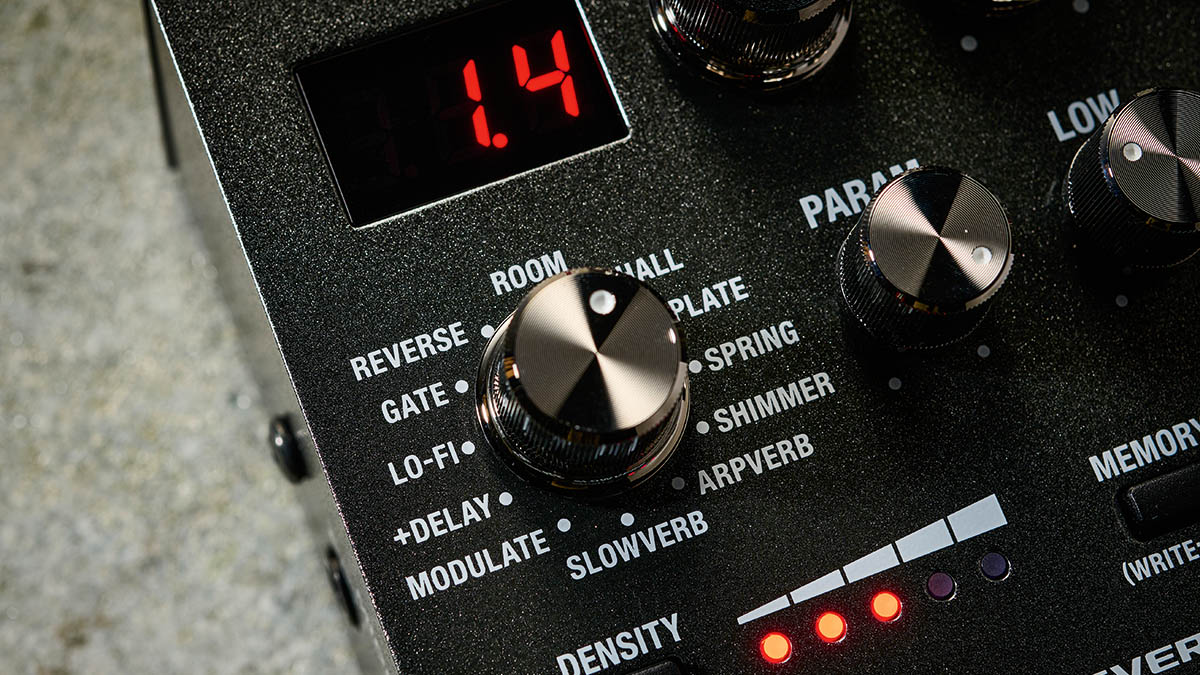
You’ve got your standard Room, Hall, Plate et al, Shimmer and Modulate for the post-rockers, Reverse for the shoegazers, and a combined reverb and delay based on the cult classic RV-3. Boss has also compensated fans for the wait with a new algorithm exclusive to the RV-200: the arpeggiated ‘Arpverb’.
These are controlled with your usual ’verb controls – Type, Time, Pre-Delay, Effect Level – as well as separate Low and High EQ controls, a Parameter control to adjust type-specific settings, plus a Density button that tweaks the ‘thickness’ of the reverb trails.
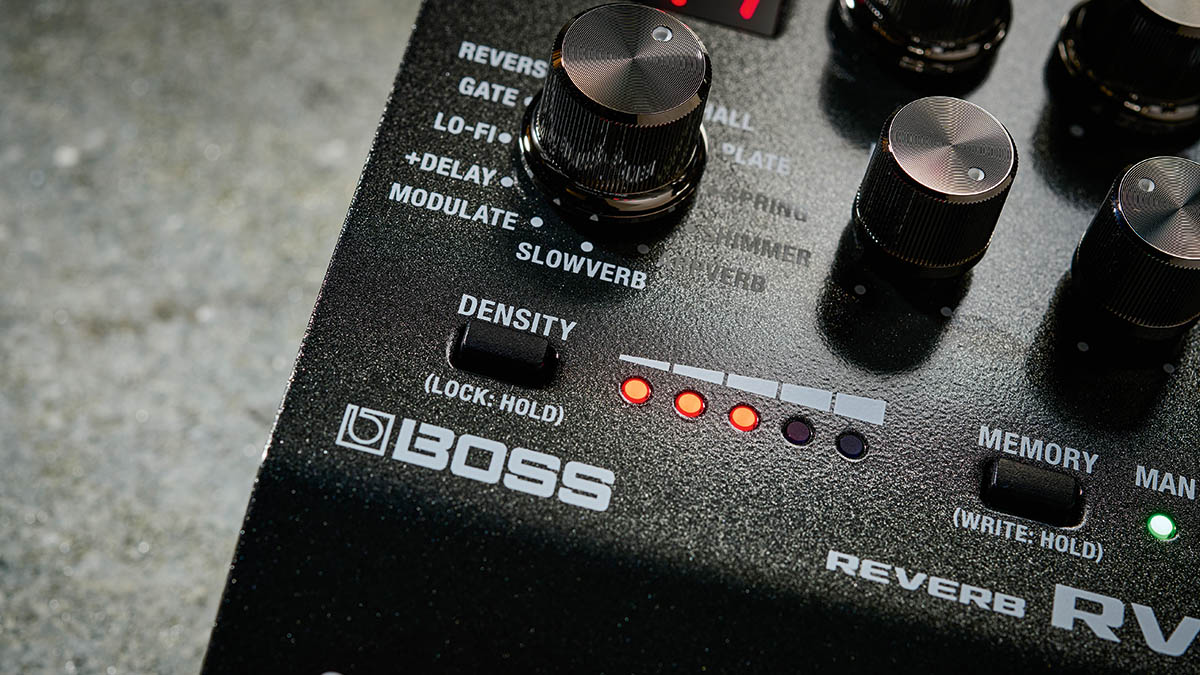
Your sounds can be saved into one of four onboard presets, while the Manual setting calls up whatever you’ve got the controls set to. You also get a dizzying level of connectivity via MIDI, stereo inputs and outputs, plus an expression/external footswitch jack.
Then there’s the Memory/Hold footswitch – that’s your gateway to the RV-200’s infinite sustain features and preset switching: short press to change sounds, long press for Hold.
Boss reverbs have a distinct tonality, and given the RV-200 is mostly composed of the same 2017 algorithms that featured in the RV-500, the story is the same here. The effects are pristine and unblemished – this pedal is more of a do-all workhorse than many of today’s singular boutique offerings. It also means the same strengths and weaknesses rear their heads.
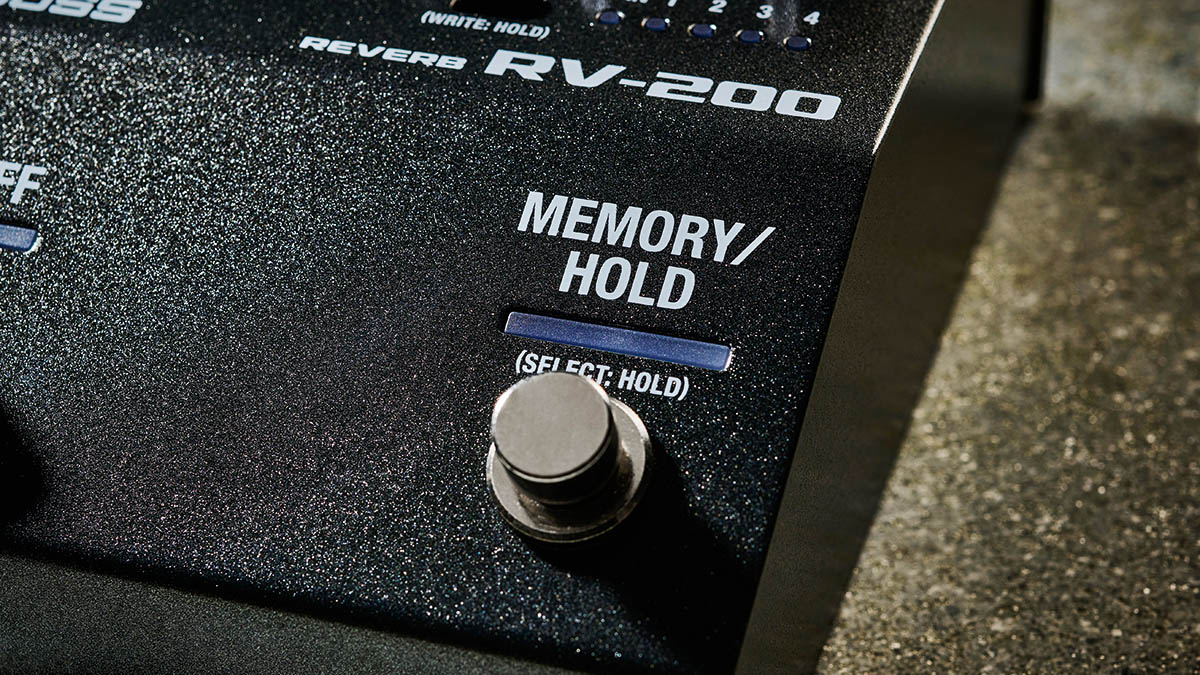
Spring modes have never been Boss’s strength, yet its modulated reverbs are among the best in the business. Room, Hall and Plate are all excellent with a little taming of the high frequencies, and the octave-up Shimmer has a pleasingly psychedelic organ tonality.
There are some frustrating oversights, however. Initially, you’ll be bowled over by the Arpverb’s 5th and octave cycles – it’s an inspiring sound, like a step phaser with reverb. But there’s no control over the tempo of the arpeggiation. Likewise, adjustment over the speed of the Slowverb’s fade-ins would make that setting infinitely more useful.
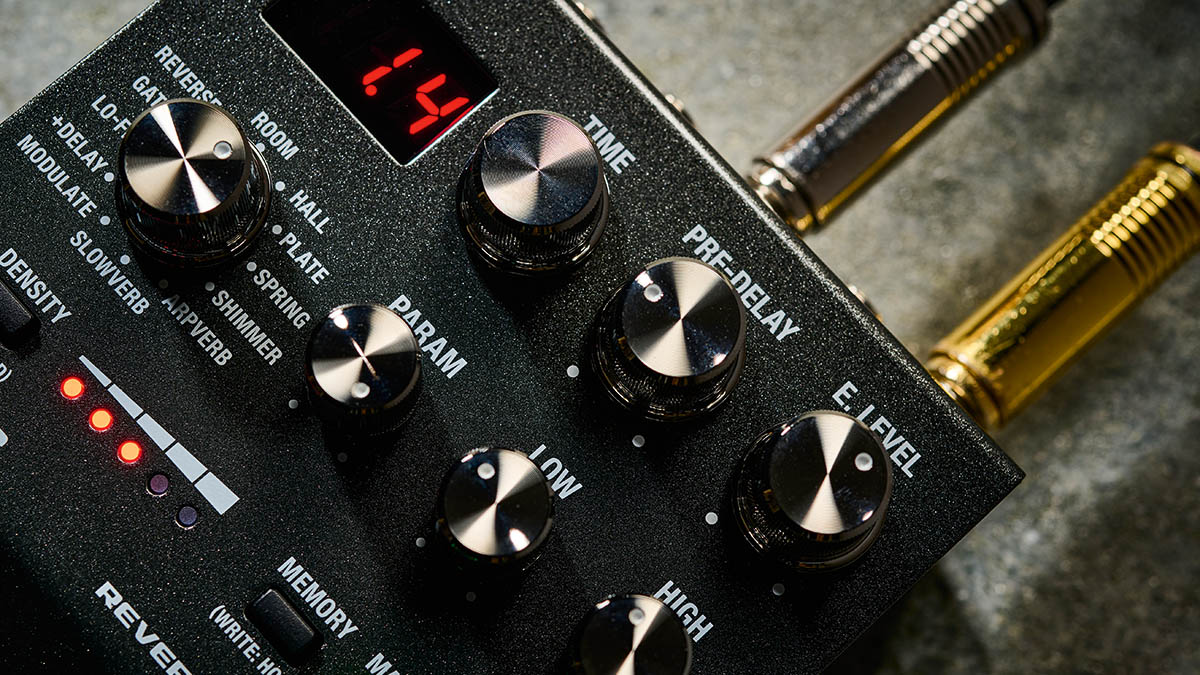
Lo-Fi sounds like running your guitar through a transistor radio in an aeroplane hangar – cool for a reverb effect, but it also effects your dry guitar sound, which is significantly less appealing.
The Reverse function sounds rich and atmospheric, but there’s no way to go 100 per cent wet – ie, Kevin Shields shoegazing 101 – without menu-diving and digging up the Direct Mute setting. Which is universal, so can’t be saved to a patch (arg).
Speaking of which, dialing in the pedal’s deeper settings is slow going with the three-character LED display, which feels a little outdated now.
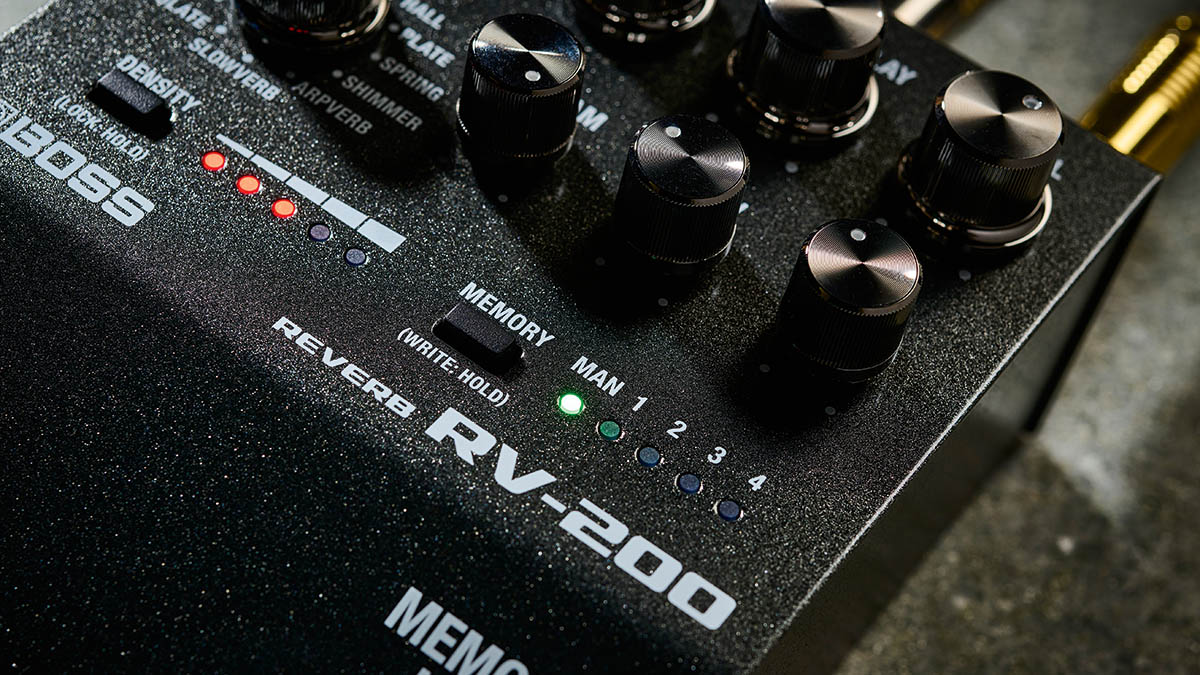
The Hold functions, meanwhile, sound like they belong on a delay pedal – the infinitely sustaining Hold function has a definite repeat-like pulse to it that’s not as smooth as rival offerings, while Twist and Warp are both essentially versions of delay oscillation takeoffs. Fun, but not the smooth pad sounds you’d expect from a reverb of this calibre.
Boss reverb pedals are legendary, and their algorithms remain inspiring, so if you’re after a reasonably priced studio-quality reverb that doesn’t take up much room on your ’board, and boasts excellent connectivity and preset functionality, the RV-200 is a must-try. But its more adventurous offerings are let down by some odd design choices – most of which are (hopefully) updatable from Boss’s end in due course, and would take the RV-200 from good to great.
Specs

- PRICE: $269 / £259
- TYPE: Reverb pedal
- DIMENSIONS: 63 (h) x 101 (w) x 138mm (d)
- CONTROLS: Type, Time, Pre-Delay, Effect Level, Parameter, Low, High, Density button, Memory, Memory button
- CONNECTIONS: 2x inputs, 2x outputs, Ctrl 1/2/Expression TRS jack, power, MIDI in/out mini-jacks, USB micro B
- POWER: 3x AA batteries (included), 9V DC power supply 260mA (not included)
- CONTACT: Boss
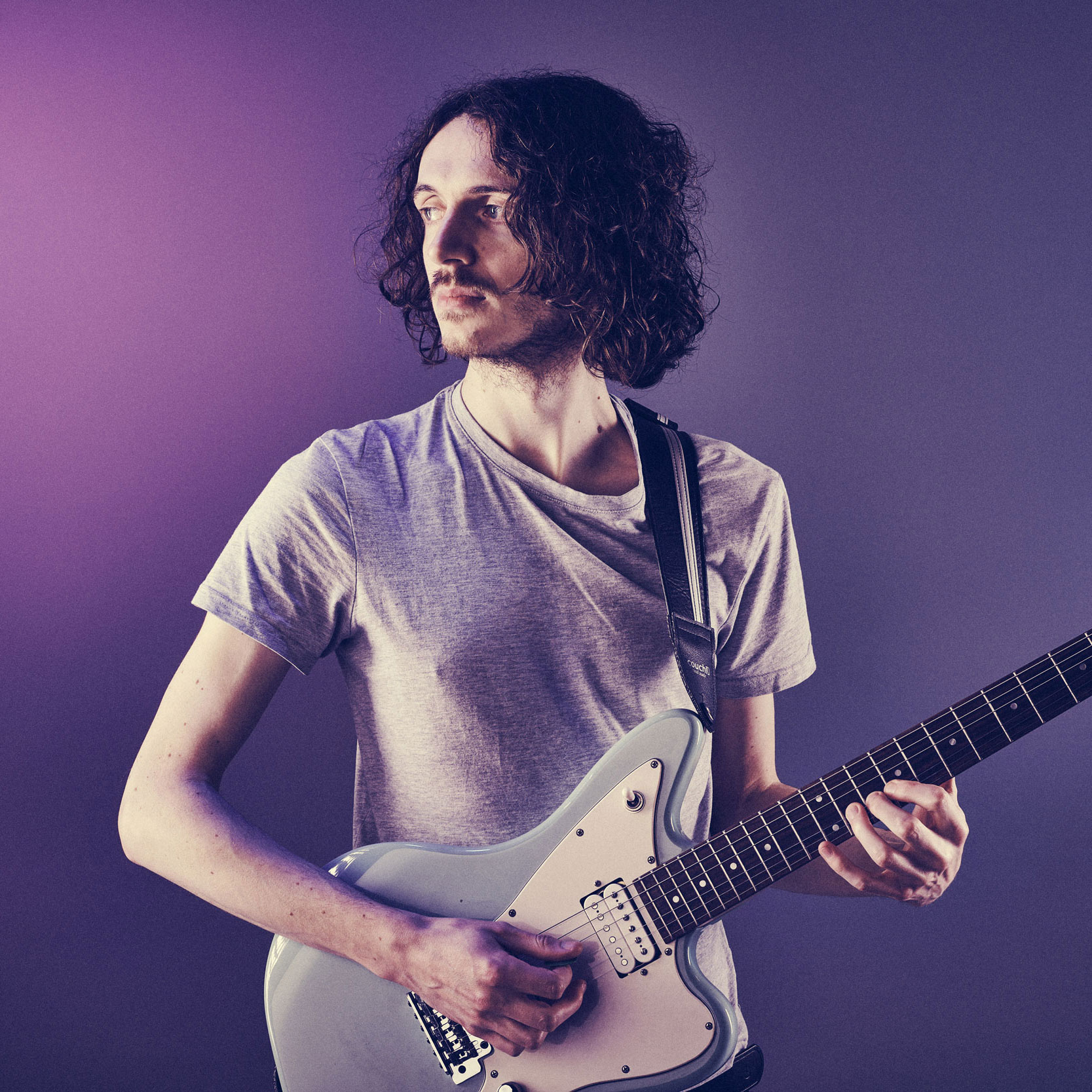
Mike is Editor-in-Chief of GuitarWorld.com, in addition to being an offset fiend and recovering pedal addict. He has a master's degree in journalism from Cardiff University, and over a decade's experience writing and editing for guitar publications including MusicRadar, Total Guitar and Guitarist, as well as 20 years of recording and live experience in original and function bands. During his career, he has interviewed the likes of John Frusciante, Chris Cornell, Tom Morello, Matt Bellamy, Kirk Hammett, Jerry Cantrell, Joe Satriani, Tom DeLonge, Ed O'Brien, Polyphia, Tosin Abasi, Yvette Young and many more. In his free time, you'll find him making progressive instrumental rock under the nom de plume Maebe.
“I said, ‘Let’s get Hendrix to play on it.’ His manager said, ‘Jimi’s playing shows back-to-back.’ So we got Jimmy Page”: The hit ’60s single that was supposed to feature Jimi Hendrix… but ended up with Jimmy Page
“It was tour, tour, tour. I had this moment where I was like, ‘What do I even want out of music?’”: Yvette Young’s fretboard wizardry was a wake-up call for modern guitar playing – but with her latest pivot, she’s making music to help emo kids go to sleep
Unlocking the power of 7th chords: expand your guitar chords beyond the basics











